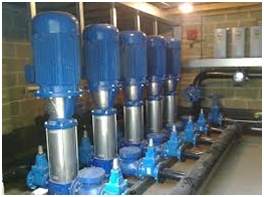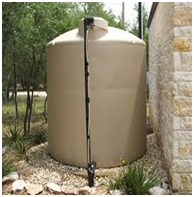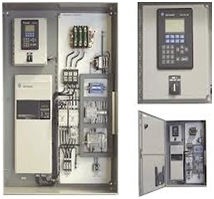Last week we shared an article of the top 10 power quality problems, and you really like dit so today here’s the top 10 ways to increase energy efficiency and performance of pumping systems. Leave your impressions!
Almost all types of industries, big or small, need pumping systems to meet their fluid, especially, water utilities. Pumping systems should be designed to be as efficient and as energy saving as possible, keeping the individual needs and future demands in mind. However, ageing, improper maintenance, miscalculations while installation, selecting wrong specifications or a wrong model, can all lead to decreased pumping efficiency.
Below mentioned are the top 10 ways following which you can considerably increase the pumping performance, which in turn can save a lot of energy and money.
1. Regular Maintenance
This is very important to increase the efficiency as well as the age of pumping system. Regular maintenance includes:
- Impeller repair, or replacement if required
- Bearing inspection, lubrication, or replacement if required
- Packing seals inspection, or replacement if required
- Mechanical seals inspection, or replacement if required
- Pump and motor alignment inspection
- Throttling losses inspection
It is estimated that a regular maintenance of a pumping system can save up to 7% of the total electricity used for pumping purposes.
2. Regular Monitoring
Regular maintenance when coupled with continuous monitoring can yield even better results. This will help a lot in conducting preventive maintenance as and when the need arises. Regular monitoring can help detect a lot of things that are otherwise difficult to find, unless the damage has already occurred.
Some of the problems that can be successfully detected through this system are:
- Blockage, clogged pipes or pumps
- Damaged impellers
- Reduced suction
- Gas filled pipes or pumps
3. Remote Controls
The main objective of using a automated controlling system in conjunction with a pumping system is, to increase the load operation efficiency.
Controls are capable of determining the load in demand and switch on/off the pumps accordingly. Remote controlling system is mostly used when a series of pumps are connected to each other in order to be able to withstand peak loads.
This system is very effective, accurate and quick compared to the conventional control systems and can result in decreased energy consumption, as well as wear and tear in the pumps.
4. Pump Capacity and Operation
If there is a mismatch between the pump’s capacity and its operating loads, the overall pumping efficiency may fall up to 25%, and in worst cases, may lead to pump failure. This can be avoided by carefully calculating certain parameters such as the head, suction, flow rate, size of the piping system, type of impeller, etc before choosing the right pump.
Miscalculations in the above mentioned parameters may lead to incorrect pump selection resulting in ineffective operation/pump failure, loss of productivity, excessive energy utilization, loss of capital, etc.
5. Oversized Pumps
If a pump is operating under throttled conditions, it can be understood that the pump is either oversized or undersized for the existing demand.
Oversized pump can result in an increased bypass flow rate of as high as +30% from its efficiency point. In such cases, impeller trimming should be considered as the best alternative to motor replacement, as the former can be a more effective power saving solution.
6. Holding Tanks
Using holding tanks during production cycles equalizes the flow rate and enhances the energy efficiency. As a result, the need for adding an additional pump to meet the sudden increase in the demand can be delayed, if not completely eliminated.
This can save electricity (up to 10%) and also decrease load on the pumping system.
7. Parallel Pumps for Varying Loads
Using parallel pumping systems can lead to increased power savings and pumping efficiency. This is especially true in case of systems that operate on varying loads, but have a static head. Parallel pumping systems are not only reliable but also are also capable of increasing the overall age of a pumping system.
It is estimated that parallel pumping systems can save as high as 50% of the total pumping electricity consumption.
8. Excessive Heating
Excessive heating occurs in pumps that pump fluids other than water that are mostly used in food processing, petrochemical and paper industries. Decreasing the tip speed of an impeller can contain excessive heating. This can be achieved by trimming the impeller blades.
Once the blades are trimmed, the pumping energy induced into the fluids decreases and as a result, excessive heating ceases.
9. Adjustable Speed Drives (ASD’s)
the name states, ASD’s can be used to adjust the speed of the motors drives. This helps to reduce the flow rate when needed. It should be noted that the energy consumption is directly proportional to (flow rate)3. Hence, a small decrease in the rate of flow can considerably reduce power consumption, as well as wear and tear in the pumps.
10. Frictional Losses
Pipe size and its characteristics play a vital role in saving energy that is spent on overcoming frictional losses. The diameter of the pipe, its roughness, material of the pipe, length of the pipe and number of bends in the entire pipeline, are some of the factors that contribute to frictional losses.
Hence to keep frictional losses at minimum, care should be taken to see that a proper pipeline design is in place during system design phase itself. Replacing the pipelines at a later stage is not only a tedious job but is also very expensive.
Conclusion
Following the above mentioned ways of increasing energy efficiency and performance of a pumping system can help you go a long way. Also, conducting necessary checks and undertaking preventive maintenance measures at regular intervals will not only help you save some money, but will also help you in saving the most fundamental energy resource in this world – Electrical Energy.
What’s your opinion on that top 10? Any other ways to add?


